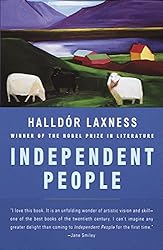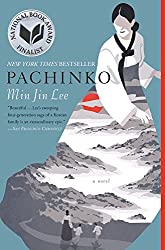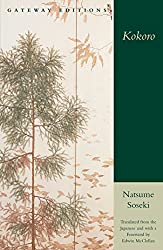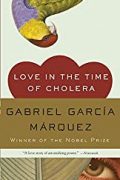
Rating: 7.8/10.
Work of Icelandic literature that won the Nobel Prize in Literature in 1955, the novel focuses on a farmer named Bjartur and his quest for “independence,” which he defines as being free from debts and obligations to anyone else. The novel describes Bjartur’s life as a sheep farmer in the harsh Icelandic landscape, where he and his family struggle for years of hardships, hunger, and the changes of modernity in the early 20th century.
Part 1 – Icelandic Pioneer. The story starts with Bjartur settling into his new farm, Summerhouses, with his new wife Rosa; Bjartur highly values freedom and is okay with living a simple life as long as he’s not in debt or working for anyone else. He doesn’t care much for material comforts or religion, unlike his wife Rosa, who is concerned with these things. Rosa is always craving meat and butter; so once, when Bjartur is away, she kills one of his sheep for food but doesn’t tell him. Bjartur spends several days searching for the missing sheep and even goes on a risky reindeer hunt, almost dying in a blizzard. The part ends with him coming home to find that his wife has died alone in their cabin, having given birth to a baby daughter named Asta Sollilja, who is still alive.
Part 2 – Free of Debt. Fast forward 13 years, and Asta is almost a grown woman; Bjartur has remarried to a woman named Finna and they live with her parents and have several sons. Bjartur is skeptical of merchants from the south and capitalism; he sees them as people who will just take your money. He’s hesitant to accept a cow that the bailiff gives him, even though it makes his wife happy. He also looks down on modern education and books, and tries to keep them away from Asta, who is curious about the outside world. They visit a nearby town by the ocean for the first time when she is 13, and she gets her first look at both the town and the ocean. When they return, they go through a harsh winter where many of the animals starve, due to a late blizzard in the spring leaving the animals with no fresh grass to eat; many die of starvation, including the cow. Bjartur refuses to ask others for hay and opts to kill his only cow, much to his wife’s disappointment.
Part 3 – Hard Times. A series of disasters befalls the household. Shortly after the cow dies, his wife Finna also passes away. Then, in the winter, a mysterious and unexplainable force kills a bunch of sheep. His eldest son commits suicide that winter by wandering off into the snow. Bjartur goes into town to search for work; in the meantime, a teacher is sent to teach Asta and the other children about religion, but he ends up getting Asta pregnant. Bjartur loses all his money to a merchant he trusted, without really understanding how it happened. Finally, when he goes back home and finds his daughter pregnant, he kicks Asta out of the house.
Part 4 – Years of Prosperity. World War 1 breaks out and significantly impacts Iceland; the prices of mutton and wool skyrocket, making many farmers, including Bjartur, wealthy. Using this newfound wealth, Bjartur builds a new house. His son Gvendur, who initially wanted to go to America, abandons that dream and stays by his father’s side. However, after the war, prices plummet, leaving many farmers unable to pay their debts; Bjartur is among them and, by the end of the book, he loses Summerhouses and is forced to move to a new farm. Modern changes make their way to Iceland like new financial systems, cooperatives, along with technology, politics and the rise of communism; new imports like sugar and wheat also make their way into the country. In the novel’s conclusion, Bjartur reconciles with Asta, his estranged daughter, although she is old and sick by that point.
The book reveals a lot about daily life in rural Iceland during that time; first, it shows how isolated everyone was. People spend their whole lives within a small valley, and the farthest they ever go is to a nearby ocean where there’s a small town; no one has even been to Reykjavik, let alone another country. This is in stark contrast to much of the outside world, which had modernized by the beginning of the 20th century when this novel takes place. The livelihood of these people revolves around sheep; keeping them healthy and well-fed is a constant concern, especially because of diseases. Since there’s no farming, the society is essentially sheep-centric; if the sheep can’t feed on fresh grass, they starve, and then the people starve too. In many ways, their lives have been unaffected by changes in the outside world and could have been more or less the same a thousand years ago. One surprising exception is their coffee consumption; they drink coffee multiple times a day and offer it to guests. While they do hear news from the outside world, it feels like a distant place that has no relation to their daily lives. However, Christianity is prevalent, and learning the Bible is considered part of the education.
At the same time, Bjartur’s views are idiosyncratic and out of step with the majority of those around him. Despite the world modernizing, he shuns new material comforts, opting instead to uphold a centuries-old lifestyle as a self-sufficient sheep farmer. This perspective is hard to reconcile with those of his wife and children, who either become miserable living with him or leave to find better lives elsewhere. While Bjartur wishes to remain rooted in the past, he can’t avoid being pulled into the modern system; lacking an understanding of what merchants, politicians, and the banking system are doing, his ignorance ultimately causes him to lose everything.



